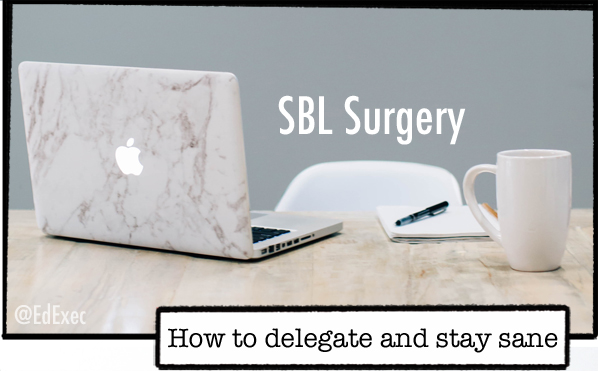In the world of Academies, GAG pooling is seen as something of a taboo. Though it first featured in the Academies Financial Handbook in 2013, it has been until recently, largely ignored.
With the increasing financial pressures on the sector and the depletion of resources throughout the system, it has steadily risen to the top of the agenda.
The DfE, the ESFA and numerous financial experts all cite the process of GAG pooling as a way to further increase efficiencies and improve the effectiveness of MATs.
The Academies Benchmark Report 2019 by Kreston, states that:
“To enable financial governance to continue to improve it is essential that MATs become more centralised. This will, in turn, facilitate GAG pooling which will enable MATs to ‘look after‘ the financially weakest schools in the system.”
In a letter to auditors in June 2018, Theodore Agnew, the Parliamentary Under-Secretary of State for the School System said:
“I would like to share more widely across the audit sector several key points that will help boards govern more effectively and make best use of the freedoms they have. We are aware that a substantial proportion of trusts are still hesitant about implementing some of the freedoms and mechanisms to enable this.”
He encourages auditors to discuss these freedoms with their clients; GAG pooling being at the top of the list.
He said:
“This is one of the greatest freedoms a MAT has. The opportunity to pool GAG is particularly valuable, in particular, to simplify the provision of support to weaker schools in a MAT until they can grow their pupil numbers. It is worth remembering that a MAT is a single financial entity.”
Interestingly, out of the 350 Trusts represented in the Kreston report, only 3 are currently GAG pooling. In the opinion of Kreston, it is clear that ‘there is something holding the sector back’.
There’s no doubt that moving to a GAG pooling model requires a significant shift in both the mindset of leadership and governance and the culture, systems and processes of the organisation.
But with approximately 50% of MATs showing an in-year deficit, an increasing number of MATs having a cumulative deficit and continually depleting reserves sector-wide, why are so many MATs reluctant to GAG pool?
The Kreston report states that MATs said they were not GAG pooling because:
- The politics were challenging (SLT, Trustees, LGBs) 46%
- Financial position 22%
- It was too difficult to implement 14%
- They will do it or are seriously considering it 5%
- Other reason 13%
The issues surrounding the ‘politics’ of GAG pooling include:
- The belief that school-level funding allocations are for the benefit of the students in a specific school and therefore should not be redistributed
- The concern that the deployment of resources from a central perspective would disadvantage individual schools and students
- The reduction in the autonomy of schools, Headteachers and Local Governing Bodies
If the financial landscape was rosier, it’s clear that GAG pooling would remain an overlooked clause hidden in the depths of the Academies Financial Handbook. But with the financial future of the sector looking increasingly bleak, MATs may find themselves having to grasp this nettle.
If you’re open-minded to the concept or are actively considering GAG pooling and you’re wondering how best to approach it, then I’ve put together a list of frequently asked questions to help you navigate this largely uncharted territory.
What options do we have in relation to GAG pooling?
In truth, though the concept is outlined in the Academies Financial Handbook, the actual ‘how’ is not so clearly defined. GAG pooling can mean any one of the following:
- Receiving all school funding centrally and allocating resources to individual schools and to the centre (removing the need to top-slice a ‘management fee’)
- Allowing school allocations to continue at a local level but pool reserves and other specified incomes streams (whilst continuing to top slice a ‘management fee’)
- In addition to the top sliced ‘management fee’, top slice an additional specified amount for central reserves/contingency
- Increase the percentage of the management fee and from this, create a centralised reserve
How could we use these pooled funds?
Again, it depends on where the money comes from, how much of it is pooled and the overarching strategy of the MAT. Outside of school allocation, (however this is determined), the money can be used for:
- Supporting the financially weaker schools in the MAT
- Creating a contingency for cashflow, unforeseen emergency costs, building maintenance, ICT replenishment etc.
- Increasing central resource and achieve efficiency savings MAT-wide (through centralisation and procurement)
- Funding projects cross-MAT to support improvement and build capacity
In what situation would GAG pooling be most effective?
If there are clear inequities across your schools funding with surpluses and reserves varying to the extreme, you can argue a case for GAG pooling. The ESFA, though it monitors individual school performance, is more interested in the overall financial sustainability of the MAT as a whole. GAG pooling is one way to secure that. For financially vulnerable schools, joining a MAT should provide them with adequate protection rather than expose them to further threat.
If all of the schools in the MAT are running close to the red line, then you could argue that pooling these funds would not achieve much at all; like shifting the deck chairs around on the Titanic. If your central budget is not capable of generating surpluses either, then your MAT will likely need to consider a more drastic approach to bring things back into line and secure sustainability.
But redistributing funds away from the schools it was intended for is not right!
You could argue that having a ‘management fee’ does exactly the same thing as GAG pooling but is simply called something different. When you look at the size of or uses of the ‘management fee’ in some MATs, it could be said that they are GAG pooling already, with some reserves and contingencies sitting centrally. The difference with this is that the route to challenge and scrutiny by the schools is stronger and more defined in terms of quantifying the value for money provided by the MAT. In fact, I worked with a Head recently who said they felt the management fee that they paid their MAT was too low and they would gladly pay more to enable the MAT to do more for them.
If the MAT has a large amount of cash sitting in the bank but ‘cannot’ use it, it will merely be an onlooker as one or more of its financially weaker schools fail; thus negligent in its financial stewardship. In these cases, if the sole purpose of GAG pooling is to secure long-term financial sustainability of the MAT, then GAG pooling in some form should be a no-brainer.
So how do we reconcile the inequity that GAG pooling creates in the schools that are financially effective?
MATs need to decide how committed they are to GAG pooling and whether they are in it for the long term. Depending on the level of need and ‘pooling’ that needs to be done, MATs might consider some form of internal loan and repayment system to overcome short-term difficulties. If the GAG pooling mechanism is being used as a means to secure sustainability in the short term – either until funding becomes adequate, pupil numbers increase, or further local efficiencies can be achieved – then the MAT can account for the internal redistribution and repayment of funds. This mitigates the perspective of schools ‘losing’ or ‘giving away’ their reserves and being ‘penalised’ for their financial efficiencies. This option should be considered carefully, taking into account context, the level of need, the financial position and the long-term goals of the MAT. GAG pooling in any form needs to be articulated clearly in relevant MAT policies including the Reserves Policy.
What if there are other reasons that we need to use the reserves/pooled resources?
Implementing a transparent system around the management of these reserves is essential. If your MAT is pooling reserves to secure tighter financial control, it should implement a process whereby schools can apply for funds as and when they need it. The MAT should ensure that the criteria for decisions taken and the prioritisation of expenditure are clear so that no school feels like it has been unfairly treated. The Academies Financial Handbook states that an appeals process for such circumstances be articulated clearly in MAT policies. My advice is that the more specific you are around the allocation of pooled resource, the less chance there is that complications will arise further down the line. Ambiguity fosters distrust. If the MAT doesn’t have a robust process for managing GAG pooled resource and cannot justify its expenditure decisions, then appeals may be lost and the impact on the relationships within and the culture of the MAT may be devastating.
What about the National Funding Formula?
If the National Funding Formula achieves its goal to balance funding across UK schools, then this will ‘iron out’ any imbalance that the GAG pooling process is designed to achieve – thus making GAG pooling, at least at its extreme, redundant. Instead, the focus will shift back to the ‘management fee’ and value for money of the MAT.
Our MAT isn’t in financial difficulty – should we still consider GAG pooling?
If your MAT is in a sound financial position but determines that it could add more value if it had more control over its funds, then this is where GAG pooling becomes particularly contentious; especially if you’re opting for Option 1 – total control over school allocation. In effect, it means that your MAT is saying that it will override the methodology of the funding formula and all its component parts and determine itself how much money each school needs – in other words, ‘acting like a Local Authority’ (Robert Hill). This is where the argument in relation to the autonomy of Headteachers and Governing Bodies grows strong. If a MAT opts for this type of GAG pooling, it indicates a significant shift in culture, operation and autonomy beyond what is currently common in the sector. These ripple effects will impact on the role of the Head, the management of the schools and the way in which the Scheme of Delegation operates.
Before going down this path, the Trustees and central team need to be clear about what they are trying to achieve and whether GAG pooling is really the best way to do it.
Our MAT is looking to grow – should we be looking at GAG pooling?
Much of your decision making in relation to GAG pooling will depend on the points made above. However, growth does pose both financial opportunities and threats to a MAT. If your MAT is looking to grow, GAG pooling is just one piece of the puzzle and should be considered in relation to the context, strategy and objectives of your MAT both in its current and future state.
For those MATs who are looking to grow or are already in a growth phase, download my Guidance for Growth Tool, written for Capita SIMS, to enable you to articulate your vision for growth, test and risk-assess your strategy and identify actions to implement your strategy successfully. Just click the image below:
So how do we move forward?
In summary, there isn’t a one-size fits all answer to GAG pooling. You’ll need to assess the current position of your MAT and identify your long-term challenges, priorities and goals to see if it is the right path for you.
For additional advice in relation to GAG pooling, get in touch with your auditors who will be able to provide you with bespoke, detailed guidance and support.
Like what you’ve read? Subscribe to this blog by clicking here.
P.S. Have you joined The Business of School Leadership Facebook Group yet? For practical support, advice, tips, tools & guidance about all things school leadership, join us in the community by clicking here.





